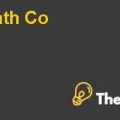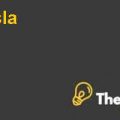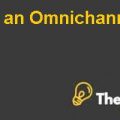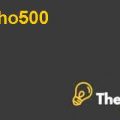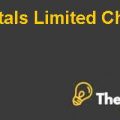
Sensitivity analysis with assumptions and limitations:
We have considered two different sales prices and on the basis of those prices, we have analyzed the proposed project and conducted sensitivity analysis although, the base case was already near to the internal rate of return of the project. We have decided to assume negative scenarios which would make the expansion investment decline further, as the base value is already very low (near zero /negative). Hence, there is a limitation in the sensitivity analysis that it would be assumed positive only and no negative cases / reductions are assumed.
Therefore, in order to conduct sensitivity of the prices, we have assumed two positive scenarios;
- Sale price of unit increases to $2.00 per unit and
- Sale price of the unit increases to $2.50 per unit.
After the change in the price of the product to $2 per unit and then to $2.50 per unit, subject to all other things remaining constant, the project’s Future cash flow, NPV and IRR would all turn to an attractive positive result as shown in appendices.
This suggests that the increased sales price is a major determinant of profitability given that per unit cost, units sold and other related costs remain in line with the estimation and all ratios also remain intact as they were in the base case. This would turn the expansion plan profitable.
Qualitative analysis / strategy and risk profile analysis:
Since the investment would be done through debt, which would double the burden on the company’s financial statements. The original debt amount was $49.8 million in 2007 which would increase to $107.6 million. This will lead to increased interest costs, debt servicing costs and it would add debt servicing cost along with the strict compliance of covenants applicable to this debt, which may become important in the future strategic decisions of the company. However, tax shields would not be undervalued in this option.
Due to the compliance and strict monitoring by the investors, Hansson Private Label Inc. would not be able to take further loans in the future of the expansion purposes, which means that the management of the Hansson company would not be able to further expand its business.
With the expansion of production capacity of a 80,000 units producing plant with a separate building, additional fixed costs are ignorable, as depreciation of the building and equipment, communication, fixed salaries, facility’s maintenance and repair etc., are to be borne by Hansson irrespective of the change in volume. This would add a point in the risk element of this expansion project because after three years, volumes may decrease and hence, these remaining costs would be unchanged.
Recommendation with regards to the expansion:
After conducting all the calculations and analysis, it is concluded that the increase in the prices of the products would be more beneficial to Hansson Private Label Incorporation, but subject to no change in the per unit cost as they will be more accurate and assumed reasonably. On the other hand, another method to turn this proposed project into a profitable one would be to reduce direct and indirect costs, which is normally not under the control of the management.
Although, increasing prices would have an adverse effect on the market share of the company and strict control over the direct and indirect costs would be impossible for the company to make investments. At the same time, the performance of Hansson Private Label Incorporation was constantly increasing in the right direction without even incurring further risks of debt and huge investments for just only three years................................
This is just a sample partial case solution. Please place the order on the website to order your own originally done case solution.



